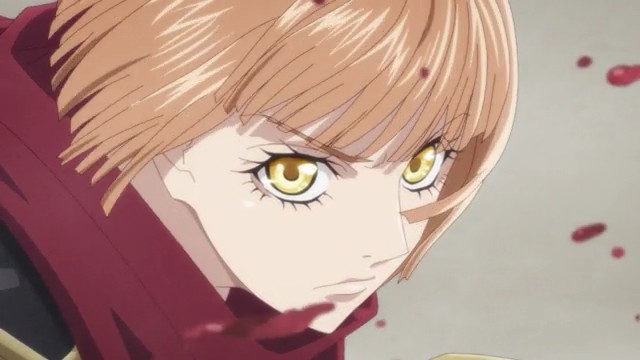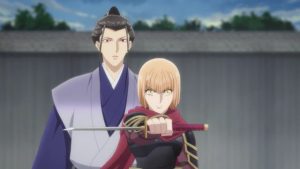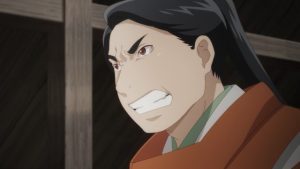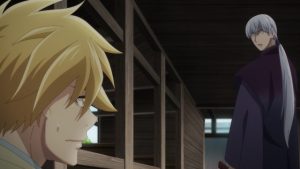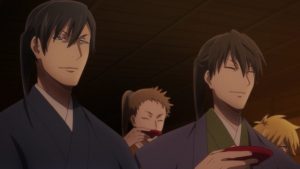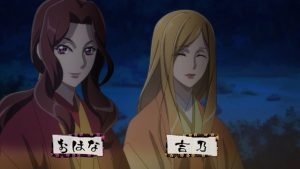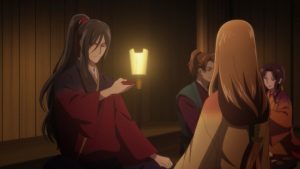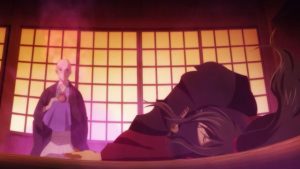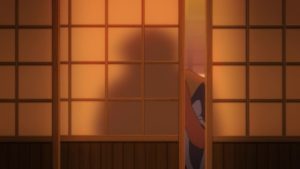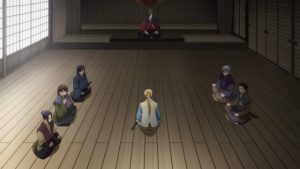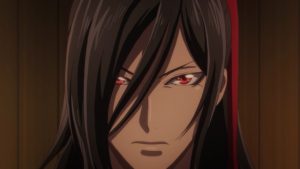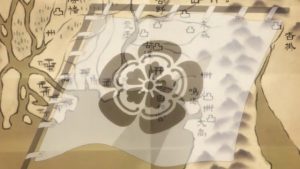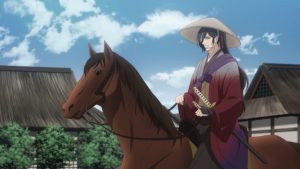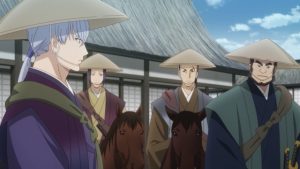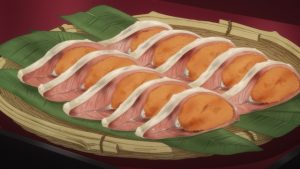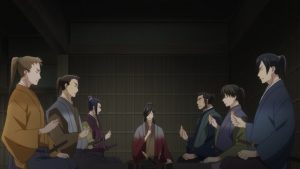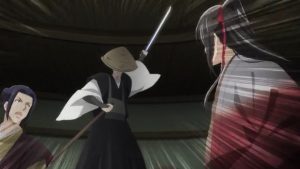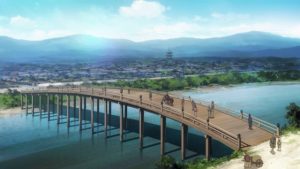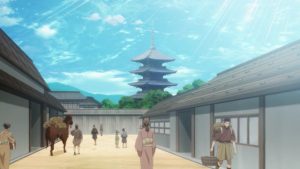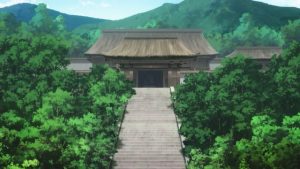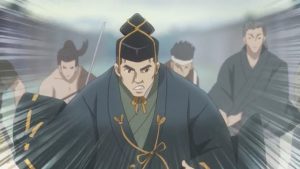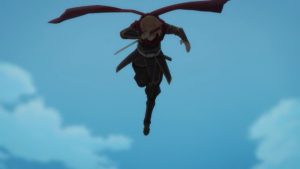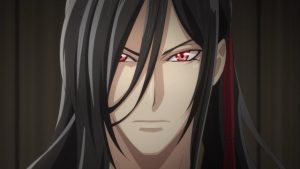It’s now clear where Kochouki: Wakaki Nobunaga is going to end, and it’s probably the only logical place a series with this title could choose to. I have no particular expectations that there will be a sequel – DEEN is certainly more prone to them than most studios (the series on which most of this one’s major staff worked, Hakuouki, had a murder of them) but I don’t see any reason to believe this show has been a big commercial hit. In the event we did get another season it seems as if they’d have to change the title in any case…
It was another big week of name-dropping as Kochouki segues from the aftermath of Nobukatsu’s death (from which Nobunaga is still reeling) and builds towards the transformational event slated for the finale. The immediate cause of irritation is Yoshikane of the Shiba clan, the figurehead rulers of Owari. Though he’s a petty zaku, he is in league with someone capable of doing Nobunaga real harm, Saitou Yoshitatsu – and very keen on doing such harm too.
It’s interesting to see the Douboushuu looped into the story. They were certainly a historical oddity, a troupe of former monks who lived as a sort of cross between Buddhist priests, art curators and cultural advisors. It’s true that as an aficionado of art and tea culture Nobunaga might have been a receptive ear, and the Douboushuu would have had free run between provinces and thus been logical spies or even assassins. I don’t know of any historical evidence that they even became involved in Nobunaga’s life in the way it was presented here, but the way it was presented certainly made it seem feasible.
After one of the Douboushuu tries to assassinate Nobinaga and is killed in a struggle with Toshiie, Nobunaga’s friend (who’s already had a diplomatic run-in with Yoshikane) voluntarily exiles himself rather than stay and give the Doubuushuu and their allies a reason to target his lord. For Nobunaga, already having lost Nobukatsu and Kichou, this is quite a blow, and one can see his demeanor becoming darker and more morose as his circle falls away from him. Eventually the assassination plot is traced back to Yoshikane and Yoshitatsu, and Nobunaga banishes the nominal head of the Shiba (which would effectively lead to the dissolution of the clan). This prompts a summons from the Shogun for Nobunaga to explain his actions (or so it seems as the time).
As it turns out this too is a Yoshitatsu plot, and more attempts are made on Nobunaga’s life – first by a bogus monk at an inn, then in Kyoto itself by impersonators of the shogun’s retainers. The one who saves Nobunaga in these instances is none other than Kichou, who’s reverted to ninja mode and follows her husband at close range. Again, no evidence whatsoever that there’s a shred of historical truth to any of this – or that Kichou loved Nobunaga enough to watch over him from close quarters as he lived as lovers with Kitsuno. But it’s good drama, anyway.
The upshot of all this is that the man who’s really responsible for all this anti-Nobunaga skullduggery is Imagawa Yoshimoto, one of the great feudal lords of the Tokaidou and great rival to the Oda clan. You can read up on Imagawa if you wish, as there’s plenty of reliable history to be found and historical spoilers are still spoilers – suffice to say he’s the crucial figure in this stage of Nobunaga’s rise to power, and a formidable and dangerous enemy.


